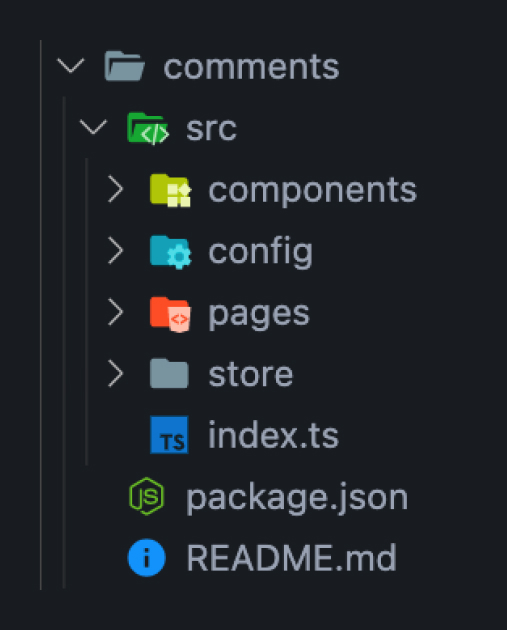Appearance
Module Information
The module can have any structure, which means it can be a single functionality or a large and complex business logic. We divide modules at our discretion and it is also our decision what structure they will have.
WARNING
The most important thing is to keep the main files in the src directory when creating the module.

Types
Modules can be divided into two types. The type determines the place from which the module is loaded.
local: Modules placed locally in the project in the defaultmodulesdirectory. These modules are only available in the project and are fully modifiable.
INFO
Changing the default directory for local modules: modulesDir option
npm: Modules hosted on external servers. Module is available when we install the package in the project (npm i module-name).
These modules are unmodifiable and they are updated only by upgrading the npm package version.
INFO
Changing the directory for installed npm packages: nodeModulesDir option.
INFO
Changing the directory attached to the symbolic link: vendorDir option.
Module naming
Local
The names of local modules are determined based on the directory structure. The adopted and recommended directory structure is based on the concept npm scope.
modules/
|-- @test/
|-- my-local-module/
|-- users/
npm
The names of the npm modules are consistent with the approach of creating npm packages. The modules in this section must be hosted on the exterbak server (npm, yarn, gitlab).
Example
import { defineConfig } from 'nuxt-splitty'
export default defineConfig({
modules: {
npm: [
'@scope/ui-module',
],
local: [
'@test/my-local-module',
'cart',
],
},
})
import { defineConfig } from 'nuxt-splitty'
export default defineConfig({
modules: {
npm: [
'@scope/ui-module',
],
local: [
'@test/my-local-module',
'cart',
],
},
})
Directory structure
Directory structure is very similar to the structure of the Nuxt 3.x project.
Directories:
assets
The assets directory contains uncompiled assets such as your styles, images, or fonts.components
The components directory is where you put all your Vue.js components which are then imported into your pages.composables
Put all your composables here. (You can speciafy auto import in the module config)config
All module configuration files.defaults
All module default vars.layouts
Application layouts.locales
Module i18n translations.middleware
The middleware directory contains application middleware.
Middleware lets you define custom functions that can be run before rendering either a page or a group of pages (layout).mixins
All module mixin files.models
All module models files.pages
The pages directory contains your application's views and routes.plugins
The plugins directory contains Javascript plugins that you want to run before instantiating the root Vue.js Application.store
The store directory contains Vuex Store files.
Directory with configuration under store are considered as store modules, with a name such as directory name.